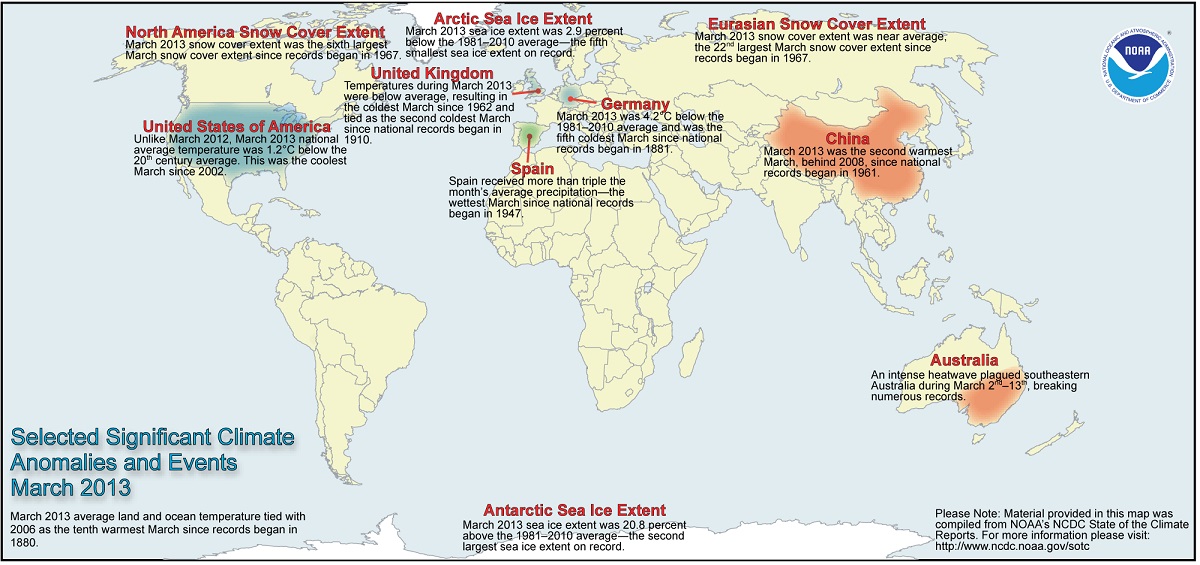Though Cool in US, March Ranked 10th Warmest for Planet

In stark contrast to last year, when the continental United States experienced the warmest March in more than a century, March 2013 was nearly a full degree Fahrenheit cooler than the 20th-century average, U.S. weather officials said.
Not so for the rest of the planet: Last month tied with March 2006 as the globe's 10th warmest March since record-keeping began in 1880.
The average of the world's temperatures last month exceeded the global average for March for the 20th century by 1.04 degrees Fahrenheit, or 0.58 degrees Celsius, according to climate data released this week by scientists with the National Oceanic and Atmospheric Administration (NOAA). And the three months from January to March 2013 was named the eighth warmest such period in the past 134 years, according to NOAA's report.
The month was especially hot in a large interior stretch of China, with temperatures spiking up to 11 degrees F (6 degrees C) above the 1981–2010 average for March in parts of the country's northern and western provinces.
The continental United States, meanwhile, experienced the chilliest March since 2002, with an average temperature of 40.8 degrees F (4.8 degrees C). Alabama, Florida, Georgia, North Carolina and South Carolina were actually colder in March than they were in January 2013, NOAA officials said. Across the Atlantic, parts of northeastern Europe and western Russia were at least 9 degrees F (5 degrees C) cooler than average, with the United Kingdom seeing its coldest March since 1962.
Last year was the hottest year on record in the contiguous United States and the ninth warmest year for the globe since 1880. Out of the world's top nine hottest years, eight have been observed since the year 2000, with 2005 and 2010 sharing the title of hottest year on record. Climate scientists have attributed the trend to global warming caused by human emissions of carbon dioxide and other greenhouse gases.
Follow Megan Gannon on Twitter and Google+. Follow us @livescience, Facebook & Google+. Original article on LiveScience.com.
Get the world’s most fascinating discoveries delivered straight to your inbox.



